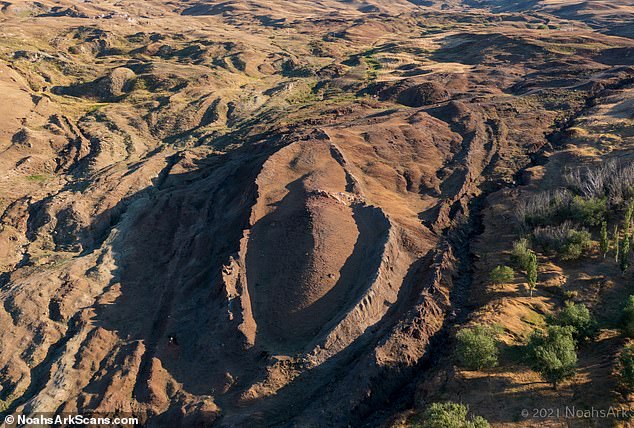
Scientists to Excavate Turkey’s Boat-Shaped Mound to Confirm Noah’s Ark Discovery
In Search of Noah’s Ark: Scientists Investigate Turkey’s Durupinar Formation
The biblical story of Noah’s Ark, a vessel said to have saved humanity and animals from a catastrophic flood, has captivated believers for millennia. Now, a team from California-based Noah’s Ark Scans is exploring the Durupinar Formation in eastern Turkey—a 538-foot-long, boat-shaped geological structure—to determine if it could be the Ark’s remains.
The Site and Its Significance
Located 18 miles south of Mount Ararat, the Durupinar Formation has intrigued researchers since its discovery in 1948. Its shape and dimensions align closely with biblical descriptions of the Ark: 300 cubits long (roughly 515 feet) and 50 cubits wide. The site, composed of limonite (an iron ore), was exposed by earthquakes and heavy rains, sparking decades of speculation.

The Durupinar Formation’s dimensions match those described in the Bible.
Scientific Investigations
Using non-invasive techniques like ground-penetrating radar and soil analysis, researchers aim to uncover evidence of human activity. Initial tests revealed lower pH levels and higher organic matter within the formation—traits consistent with decaying wood. Radar scans also detected underground rectangular structures, possibly indicating compartments described in the Ark’s design.
Andrew Jones of Noah’s Ark Scans emphasized caution: “Protecting the site is our priority. We’ll only excavate once we’ve gathered conclusive evidence and a preservation plan.”

Radar imagery hints at rectangular cavities beneath the surface.
Dating the Flood
Soil samples analyzed by Istanbul Technical University contained marine materials and clay, suggesting the area was submerged 3,500–5,000 years ago—a timeline overlapping with the biblical flood narrative. Researchers presented these findings at the 2023 International Symposium on Mount Ararat, reigniting debates about the Ark’s historicity.

Soil analysis points to a submerged past.
Skepticism and Faith
While believers argue the Durupinar Formation’s location near Mount Ararat (cited in the Bible as the Ark’s resting place) supports their claims, skeptics note the lack of definitive proof. No wooden remnants have been found, and critics question whether a wooden ship could survive millennia. Still, the team remains undeterred, planning further scans and collaborations with Turkish universities.
The Bigger Picture
The search for Noah’s Ark intersects with broader questions about faith and science. For some, the Durupinar Formation symbolizes the enduring power of ancient texts; for others, it’s a geological curiosity. As technology advances, the line between myth and history may blur, but for now, the mystery endures.

Scientists continue their quest for answers at Durupinar.
Whether the Durupinar Formation proves to be Noah’s Ark or a natural marvel, its exploration highlights humanity’s fascination with reconciling ancient stories with modern science.


